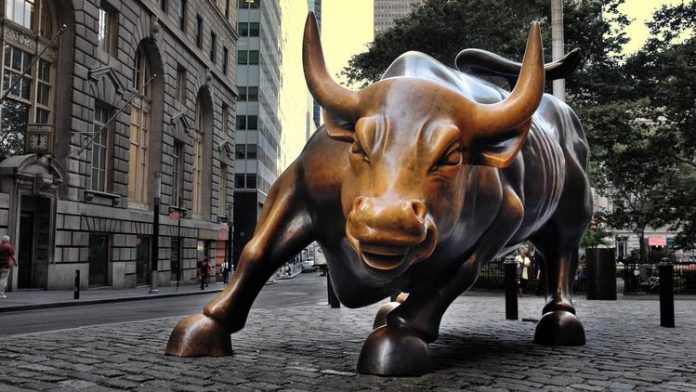Stocks opened higher today, rebounding from yesterday’s dip triggered by a surge in bond yields and a hawkish speech from Fed Chair Powell. The Dow Jones Industrial Average leaped by roughly 0.5%, adding more than 150 points. The Nasdaq Composite and the S&P 500 weren’t far behind, each climbing about 0.3% and 0.4%, respectively.
Investors continue to digest Powell’s recent comments, where he labeled the Fed’s policy as “restrictive” yet didn’t rule out further rate hikes, given the uncertain inflation outlook. “If it becomes appropriate to tighten policy further, we will not hesitate to do so,” Powell asserted in his speech at the International Monetary Fund in Washington.
Echoing Powell’s sentiment, other Fed officials this week have indicated a need for more tightening. Today, the market will tune in to speeches from the Dallas Fed’s Lorie Logan, Atlanta’s Raphael Bostic, and San Francisco’s Mary Daly for further insights.
In the bond market, yields took a step back after yesterday’s spike, with the benchmark 10-year yield dipping below 4.6%.
Adding to the mix, the University of Michigan’s index on consumer sentiment revealed a gloomier view of the U.S. economy. The preliminary reading for November showed the index at 60.4, significantly lower than the expected 63.7 and marking the lowest point since May. This decline also represents the fourth consecutive month of downturns.
Joanne Hsu, Director of the Surveys of Consumers, noted, “While current and expected personal finances both improved modestly this month, the long-run economic outlook slid 12%, in part due to growing concerns about the negative effects of high interest rates. Ongoing wars in Gaza and Ukraine weighed on many consumers as well.”
Interestingly, consumer expectations for long-term inflation have escalated to levels not seen since 2011, now anticipating inflation at 3.2% over the next five years, up from last month’s 3%.
This uptick in inflation expectations aligns with the Federal Reserve’s recent emphasis that inflation still has “a long way to go” to align with the Fed’s 2% target. The Consumer Price Index (CPI) has shown a stagnant growth pattern in recent months, with a 3.7% annual increase in both August and September.
The upcoming October CPI report, due on November 14, is projected to show a 3.3% rise over the previous year.
Meanwhile, the Fed’s preferred inflation gauge, the “core” PCE, which excludes volatile items like food and energy, recorded its most significant monthly increase since May last month, though the annual price rise continues to decelerate.
Powell, in a press conference on November 1, described these inflation trends as “favorable,” but cautioned that they are insufficient to declare a definitive win against inflation. “A few months of good data are only the beginning of what it will take to build confidence that inflation is moving down sustainably toward our goal,” he stated.
This week, several Fed officials, including Powell, have underscored the possibility of additional interest rate hikes to maintain the downward trajectory of inflation. Speaking at an IMF event yesterday, Powell reiterated, “If it becomes appropriate to tighten policy further, we will not hesitate to do so.”
Richmond Fed President Thomas Barkin, also speaking yesterday, expressed doubts about the current policy’s restrictiveness. He pointed out that “shelter and services inflation remain higher than historical levels,” adding, “Whether a slowdown that settles inflation requires more from us remains to be seen.”
In the commodities sector, oil prices are on the rise for the second consecutive session after hitting a three-month low amid global consumption concerns. West Texas Intermediate crude futures edged close to $77 a barrel, while Brent crude futures hovered above $80.
Stocks are bouncing today, but will they hold their gains? The S&P is up almost 7% over the last two weeks alone and is now testing resistance at the mid-October highs. The market is very overbought in the short term, too, which makes a retracement likely.
That’s why, despite the ongoing bullish enthusiasm, selling the peak might make sense here. Then, traders could theoretically buy at the higher low – that might arrive in just a matter of days – following a few bearish sessions before the next rip starts.
Stocks could press higher and just absolutely melt bears as well, but considering just how quickly the market has risen, it’s certainly less probable.








